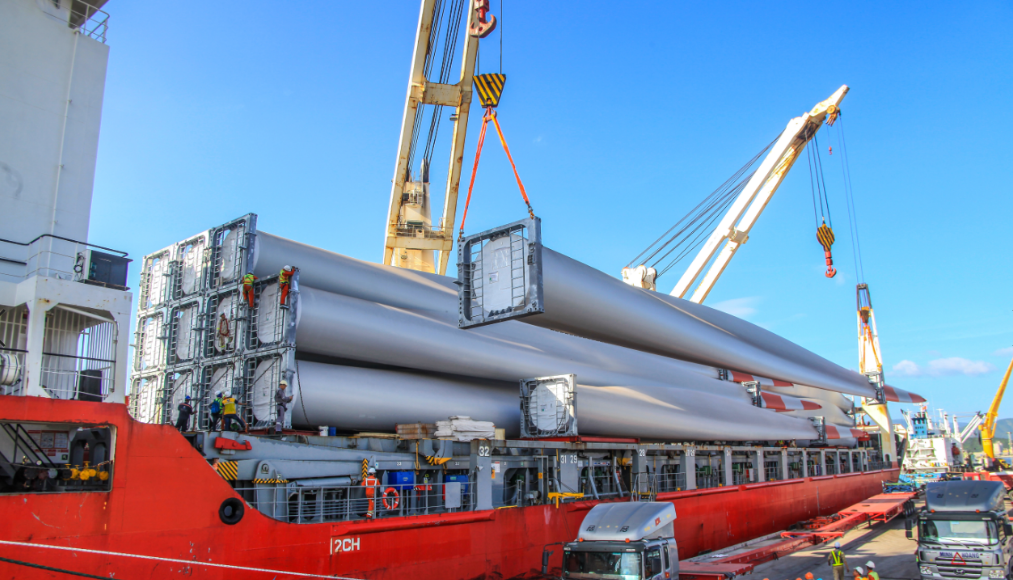Interviewed by Bangkok Post, The Blue Circle’s CEO Olivier Duguet dives into the company's vision and current plans for renewable energy in ASEAN, clarifies the myth of intermittent output of renewable energy and explains how the future of power is the balancing of grid operations.
——
‘Seven years ago when Olivier Duguet moved to Southeast Asia to pursue his dream as an energy entrepreneur, things got off to a rocky start. As he explored opportunities in Thailand and Cambodia, the Frenchman faced challenges -- some of which are still unresolved -- but that didn't hold him back from 'establishing a foothold in the renewable energy business in the region.
"In 2011, I looked at Southeast Asia and decided to move here in 2013 to develop wind power. I learned a lot about the situation in Thailand and found that land regulation is very specific. Every country has its own specific rules but here, it was hard," recalls Mr Duguet.
"I learned that it's very difficult to build in a watershed area in Thailand or basically at all in the mountains, which is normally where the wind is. That's impossible," he tells Asia Focus.
"When you ask for a map of the watershed areas, it's not public. So how we can apply for something or deal with some regulation that is not public? It takes at least one year here to get the map, to know exactly how to do this, and for wind power it takes two to five years to develop. It's an example of the learning curve we went through in Thailand. It was painful but anyway, we've learned how to do it here," he adds with a smile.
Many people, including authorities in Thailand and Cambodia, seem to share preconceived ideas about wind energy in Mr Duguet's view.
"In Thailand, people told me, there is no wind here. No wind in Cambodia. No wind in Thailand. Forget about it. That was very interesting," he says.
"I insisted and asked them to look further. There is probably enough wind to be commercially viable and competitive in Thailand and in Cambodia also. We find wind mostly in the Northeast of Thailand where we specialised, and we have a big project in the pipeline for the region. However, we are still in discussions with the government and explaining to them that we can be competitive against gas, oil, coal, or whatever fossil fuels. That's very new for the government for sure but the pre-conceived idea is that wind is too expensive. It's not. It could be competitive. You have to explain."
The company Mr Duguet founded and now leads as CEO, The Blue Circle, is a Singapore-based developer of renewable energy with a focus on wind power in Southeast Asia. At present, it operates a 40-megawatt project in Ninh Thuan province in Vietnam, the first foreign-owned and operated wind project in the country and the largest as of last year.
Another 40-MW site is being built in southern Vietnam, and there are more to come. In Thailand, the company has bought land, mostly in the northeastern region, with 700 MW of wind farms in the pipeline.
"There is enough wind there so we have been measuring the wind," Mr Duguet says. "We have secured the land, paid the farmers, all of our projects have been paid for over the past four to five years to prepare to open. There was a preliminary environmental study of course, and grid connection. All 700 Megawatts are are ready to go when the government allows us to use a feed-in tariff, a fixed price for everybody, or bidding for the price."
Meanwhile, the company is in the final round of discussions with the government of Cambodia for The Blue Circle's first wind project there.
Why Southeast Asia? Mr Duguet explains that the macroeconomic picture plays a big part. Asean, he says, is going to be the fourth largest economy in the world by 2030, and the region's high energy demand growth also makes Asean the ideal location for The Blue Circle.
"The macroeconomy is one of the most interesting factors while a huge population are now living in Asean countries," he notes. "The growth in consumption of energy is one of the highest in the world here. If you look at Vietnam, there has been 11-12% growth of energy consumption per year for a country with 90 million inhabitants. That's huge growth. In less advanced countries such as Myanmar and Cambodia, there has been 16% growth of electricity consumption. It's enormous. Gigantic. These countries and the whole region have the chance to leapfrog and jump directly to the next generation of renewable technology. That is the reason why we have kept on trying here in the region because we believe it is just the beginning."‘
Read the full article here.

